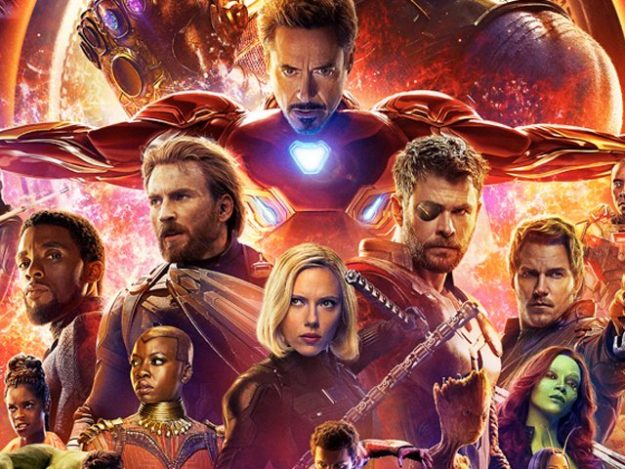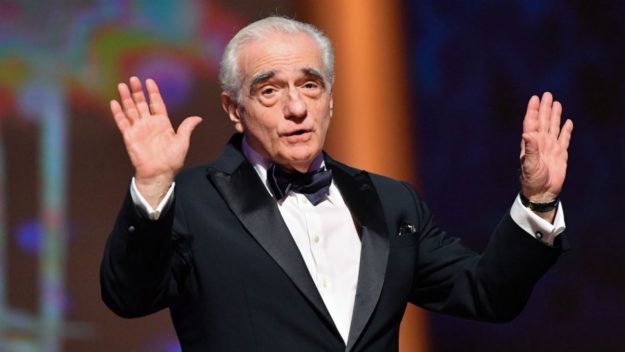
If his indictment alone was not enough to offend mass sentiment, Scorsese’s fellow New Hollywood pioneer Francis Ford Coppola has joined him in the assault. Their gripe? That Marvel films, and by extrapolation other superhero films, are not ‘cinema’. Coppola even went as far as calling them “despicable.” Harsh!
The obvious question then is what these films are if not ‘cinema’. As Samuel L Jackson, throwing his hat in the ring put it, “That’s like saying Bugs Bunny isn’t funny.” But Scorsese insists the targets of his critique are the film equivalent of ‘theme parks.’ He argues, “It isn’t the cinema of human beings trying to convey emotional, psychological experiences to another human being.”

It goes without saying that Marvel’s had its fair share of defenders. Obviously, the cast and crew of the franchise are at the forefront, but where they have been politely given the respect they still hold for the likes of Scorsese, the public at large has not been so kind. Though understandable, given Marvel’s current popularity, a lot of reactionary criticism has been as unfair as the comments that sparked it.
However, as emotionally-charged as the debate kicked off by Scorsese has been, there is a lot more nuance to the issue than apparent at first sight.
Old Hollywood to New Hollywood and back again
To understand what Scorsese means when he talks about cinema, we need to revisit the sociocultural and entertainment landscape of the United States circa 1960 to 1980. It was a period not dissimilar to our own in many ways. The jubilance of the post-WW2 wonder years was starting to give way to the nuclear-tinged paranoia of the Cold War in much the same way that the terrorism-fueled anxiety of the 2000s and 2010s displaced the post-Cold War optimism of the 1990s.
 PHOTO:FILE
PHOTO:FILEThen there is the case of identity politics. The 1960s saw both feminism and race-based discourse reach fever pitch in progressive and not-so progressive ways. After decades of relative disinterest, identity politics have resumed center-stage.
Both these periods, as such, were ripe for cultural displacement, at least in terms of entertainment choices. But that is where the similarity ends.
Before names like Scorsese and Coppola and Kubrick and Spielberg cemented their titanic legacies, the Hollywood landscape was governed by a risk-averse studio system that had settled on what it believed would be an evergreen formula for success. Opting to ignore diverse stories, this system centered on formulaic ‘spectacles’ based on clearly defined genres such as musicals, historical epics, disaster films and Westerns. The idea was that these would leverage emerging cinema technologies to draw audiences, rather than innovative craft.
 PHOTO: MARVEL.COM
PHOTO: MARVEL.COMThe strategy worked, for a while. Films like Ben Hur and the Sound of Music were immense successes and studios doubled down on similar productions. However, the rise of ‘60s counterculture resulted in waning audience interest in Hollywood spectacles. Soon enough, the ground was ready for a new film-making approach in line with the period’s cultural consciousness.
New Hollywood emerged in this entertainment void, as younger film-makers, like Scorsese himself, leveraged their counterculture sensibilities and European art-house cinema influences to create films that enjoyed both commercial and critical success.
Given the attitude the New Hollywood ‘movie brats’ as they were called had towards Old Hollywood’s over-reliance on spectacles and a select few genres, it is understandable why Scorsese is skeptical of Marvel films and other superhero blockbusters. In many ways, Hollywood is returning to the old model of big screen spectacles that rely on clear genre divisions and cutting edge technology. Why that is so will be explored in detail in the next part of this series.
The franchise killed the movie star
Artistic sensibilities or not, Hollywood and cinema as a whole, is a business. It always has and most likely, always will be. Film-makers may claim various goals when deciding what sort of film they make but it has always been a ruthless world driven by profits. While the New Hollywood movement did revitalise the American film industry with ideas and techniques, it was commercial success that cemented the credentials of directors like Scorsese.

Although not an unknown idea in Old Hollywood, the superstar director really emerged with New Hollywood. Traditionally, features were marketed using the draw of acting talent, usually the leading men and women. In New Hollywood, more often than not, marketing would also rely on the name brand of the director.
Viewed through nostalgia goggles, this development may appear an exclusively positive one. In practical terms however, it came with a set of challenges that would make this approach unsustainable. For starters, star billings gave a huge amount of control and influence to name brand film-makers and acting talent. On one hand, this allowed some directors to craft iconic cinematic experiences without studio meddling. On the other, it fostered a very costly culture of film-making indulgence. Michael Cimino’s Heaven’s Gate was an early cautionary tale on what allowing a celebrated director too much free reign could result in.
Another drawback of relying on superstar directors is how difficult it is for a new generation to take their predecessors’ mantle. A pattern seen across the entertainment industry and other fields is that it is considerably easier for pioneers to build their legacies. Given that they are exploring new territory, they often have more space to make mistakes than their successors do.
Burdened by the previous generation’s legacy, the new generation is expected to replicate from the get-go the standards the former took a lot of time and experimenting to achieve. As a result, where once Hollywood was the domain of dozens of superstar directors, only a handful of brand names have emerged since the 1990s.

In the face of these challenges, the franchise provided the ideal model to move beyond relying on star billings for both actors and directors. In a franchise, it no longer mattered who was at the helm or the starring role. Directors could come and go and like James Bond, the character could be re-launched with each re-casting. In theory at least, audiences would flock to a film due to their association with the source material and expectations built up by previous installments. This is the ground on which Marvel built its empire, slowly, steadily and at times, not so surely.
There are two more economic angles to the success franchises based around spectacles have started to enjoy. One of them is the globalisation of Hollywood. As the industry expanded into markets where a vast majority of audiences cannot understand English, nuanced dramas exploring the human condition have lost their appeal. This is not because they are ‘boring’ for most audiences. Rather, language and cultural barriers mean a lot of subtext is lost in translation.
Then, there was the global recession of the 2000s. As audience purchasing power contracted around the world, film-goers became more selective about what watched. Think about it. Why give an unconventional film a chance if you only visit the cinema once a month. Would it not make more sense to go for a product you know what to expect from?

No wonder then that Scorsese or Coppola are salty. These factors have robbed them off their brand value. Their name alone is no longer enough to sell their films. Sure aficionados will still make it a point to watch whatever they put out based on their reputations. The wider audience, however, would still prefer to watch men and women in tights slug it out.
‘Not cinema’ revisited
What do you do when you lose leverage on people? In both politics and other domains, when you have no card left to play, you make an appeal to your audience’s moral sensibilities. This is unjust, that is immoral, and so on. In the creative industries, you simply say, ‘this is not art’ – or ‘cinema’, when it comes to films.
There must be lots written about what constitutes art and what does not. The fallacy at the heart of many of these competing ideas is that there can be some sense of purity or merit that can privilege one piece of art over another.
Every generation, meanwhile, has both seen its creative choices derided and derided another generation’s creative choices. There was a time when jazz was an affront to music. Then it was rock. Then rap.
Comic books, whose characters now are some of the most marketable names, were once treated with utmost contempt. Even film – and you can still hear this argument – was said to not be on the level of literature or theatre. One wonders, what the first cave painter heard from his or her parents’ generation. This culture war is as old as time.

Scorsese is wrong on many levels when he argues that Marvel films or other blockbusters are not the cinema of people trying to convey emotional experiences. For Marvel at least, a huge part of its success is that it steadily built an emotional connection between its characters and audiences. If you want proof, just look up audience reactions on YouTube to when Thor arrives in battle in Infinity War or when, in Endgame, a weary Captain America finds himself surrounded by all the heroes Thanos had snapped away. Even Fast and the Furious has made us cry and you can’t get any cheesier than that franchise.
That said, there is a real concern that perhaps Scorsese could not articulate. Films and cinema are powerful in allowing us to relate to situations we cannot imagine ourselves in and reshaping our cathartic experiences. Used in a particular way, it is a strong tool to foster empathy, create understanding and bridge differences. As economic concerns dominate film choices both on the producers’ and audience’s end, there is a risk that this potential of the medium may be ignored altogether, along with a lot of stories that need to be told.
If New Hollywood provides any lesson, however, it is that all film trends grow weary and time will always create space for a new breed of artists. I am optimistic.
Have something to add to the story? Share in the comments below.


















COMMENTS
Comments are moderated and generally will be posted if they are on-topic and not abusive.
For more information, please see our Comments FAQ